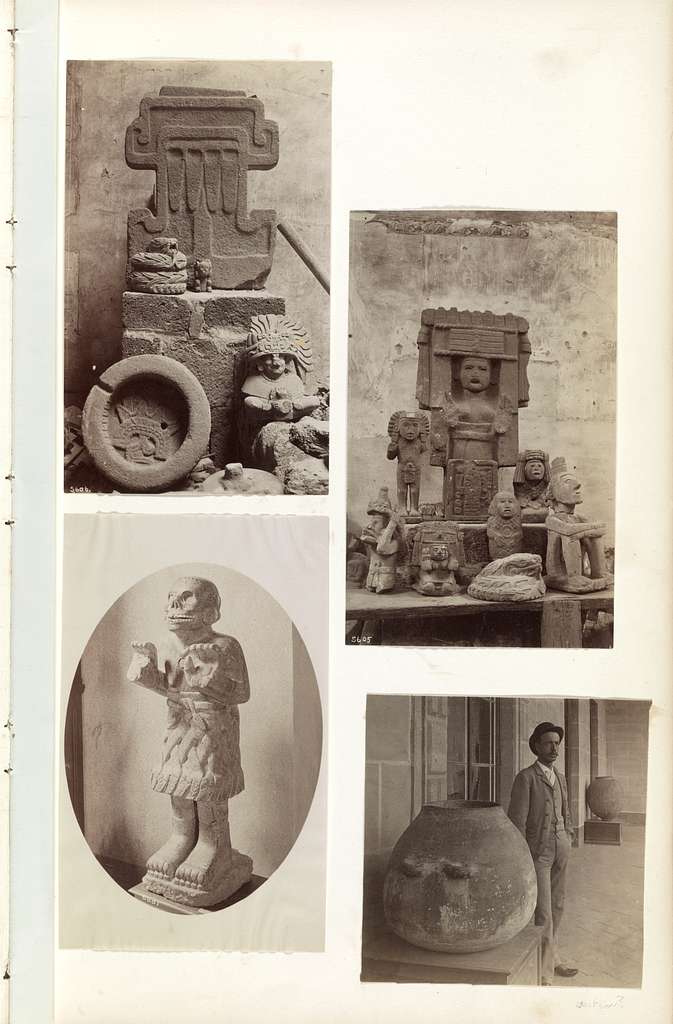Overview
Introduction to Archaeology
Archaeology is a fascinating field that allows us to delve into the depths of history and uncover the secrets of ancient civilizations. Through meticulous excavation, analysis, and interpretation, archaeologists piece together the puzzle of our past. They dig deep into the earth, unearthing artifacts, structures, and sometimes even entire cities that have been lost to time. By studying these remnants of the past, archaeologists gain insights into the lives, beliefs, and achievements of our ancestors. From the grandeur of the Egyptian pyramids to the enigmatic ruins of the Mayan civilization, each discovery adds a new layer to our understanding of human history. Archaeology is not just about digging up old objects; it is about reconstructing the stories of the people who came before us. By examining the material culture left behind, archaeologists can piece together the social, economic, and political systems that shaped ancient societies. It is through these endeavors that we are able to connect with our past and gain a deeper appreciation for the diversity and complexity of human civilization.
Importance of Archaeological Discoveries
Archaeological discoveries play a crucial role in shaping our understanding of the past and the development of human civilization. Through the excavation and analysis of ancient artifacts, structures, and remains, archaeologists are able to piece together the puzzle of history. These discoveries provide valuable insights into the lifestyles, cultures, and technologies of ancient civilizations. They allow us to learn about the social, political, and economic systems that existed in the past, as well as the interactions between different societies. Moreover, archaeological findings can challenge existing theories and shed new light on historical events and narratives. The significance of these discoveries cannot be overstated, as they contribute to the preservation and interpretation of our shared heritage. By studying the past, we gain a deeper appreciation for our roots and a greater understanding of the present.
Methods and Techniques in Archaeology
Archaeologists use a variety of methods and techniques to uncover and study ancient artifacts and structures. One of the new developments in archaeological research is the use of remote sensing technologies, such as ground-penetrating radar and LiDAR, to locate buried remains without the need for extensive excavation. Another new approach is the application of DNA analysis to study ancient human remains, providing insights into migration patterns and genetic relationships. Additionally, archaeologists are now utilizing advanced imaging technologies, like 3D scanning and photogrammetry, to create detailed digital models of artifacts and sites. These new methods and techniques are revolutionizing the field of archaeology, allowing researchers to uncover and interpret the past in ways that were not possible before.
Ancient Civilizations

Egyptian Pyramids: Marvels of Engineering
The Egyptian pyramids are a testament to the incredible engineering skills of the ancient Egyptians. These magnificent structures were built as tombs for the pharaohs and were constructed with precision and ingenuity. The pyramids were made using limestone blocks, which were carefully cut and transported to the construction site. The construction process involved a complex system of ramps and pulleys to lift and position the massive blocks. The pyramids were built with such precision that the sides are aligned with the cardinal points of the compass. Inside the pyramids, intricate hieroglyphics and artwork adorn the walls, providing a glimpse into the beliefs and traditions of the ancient Egyptians. The sheer size and complexity of the pyramids continue to astound archaeologists and visitors alike, making them one of the most iconic and enduring symbols of ancient Egypt.
Mayan Ruins: Unraveling the Mysteries
The Mayan ruins are a testament to the advanced civilization that once thrived in Mesoamerica. These ancient structures, scattered across the dense jungles of Central America, hold the key to unraveling the mysteries of the Mayan people. The intricate architecture and elaborate carvings found in these ruins provide valuable insights into their culture, religion, and daily life. Archaeologists have painstakingly excavated and studied these sites, piecing together the puzzle of the Mayan civilization. The Mayan ruins continue to captivate researchers and visitors alike, offering a glimpse into a fascinating world that existed centuries ago.
Indus Valley Civilization: Lost in Time
The Indus Valley Civilization, also known as the Harappan Civilization, was one of the ancient world’s most advanced urban societies. Flourishing around 2500 BCE in what is now modern-day Pakistan and northwest India, it spanned an area larger than contemporary Egypt and Mesopotamia. The Indus Valley Civilization is shrouded in mystery as much of its history and culture remains unknown. However, archaeological excavations have provided valuable insights into this enigmatic civilization. The cities of Mohenjo-daro and Harappa, with their well-planned layouts and advanced drainage systems, are remarkable examples of the engineering prowess of the Indus Valley people. The discovery of seals, pottery, and jewelry suggests a sophisticated trade network, while the absence of palaces or temples raises questions about the political and religious structure of the civilization. The Indus Valley Civilization’s script, which remains undeciphered, adds to the intrigue surrounding this lost civilization. Despite the lack of detailed history course descriptions, the archaeological evidence paints a picture of a complex and highly organized society that thrived for centuries before eventually fading into obscurity.
Shipwrecks and Underwater Archaeology

The Titanic: Tragedy and Discovery
The Titanic: Tragedy and Discovery
The sinking of the Titanic in 1912 was a tragic event that claimed the lives of over 1,500 people. However, it also led to one of the most significant archaeological discoveries of the 20th century. The wreckage of the Titanic was finally located in 1985, more than 70 years after it sank to the bottom of the Atlantic Ocean. This discovery provided valuable insights into the design and construction of the luxurious ship, as well as the events leading up to its demise. The exploration of the Titanic has been an ongoing endeavor, with numerous expeditions uncovering new artifacts and documenting the site. The recovery of personal belongings, such as jewelry and clothing, has helped to humanize the tragedy and provide a glimpse into the lives of those on board. The Titanic remains a symbol of both human achievement and the fragility of life, and its discovery continues to captivate the world.
Antikythera Mechanism: Ancient Computer
The Antikythera Mechanism is a remarkable archaeological discovery that has unveiled the uncovered secrets of ancient civilizations. This intricate mechanical device, found in a shipwreck off the coast of the Greek island of Antikythera, is believed to be an ancient analog computer dating back to the 2nd century BCE. The mechanism was used to track astronomical positions and predict celestial events, showcasing the advanced knowledge and technological prowess of the ancient Greeks. Its complexity and sophistication have astounded researchers, shedding light on the scientific achievements of civilizations long gone. The Antikythera Mechanism serves as a testament to the ingenuity and innovation of our ancestors, and it continues to captivate the minds of archaeologists and historians today.
Blackbeard’s Ship: Pirate’s Treasure
Blackbeard’s ship, also known as Queen Anne’s Revenge, is one of the most famous shipwrecks in history. The ship was originally a French slave ship before it was captured by the notorious pirate Blackbeard in 1717. Blackbeard, whose real name was Edward Teach, used the ship to terrorize the Caribbean and the American colonies. The discovery of the wreckage of Queen Anne’s Revenge in 1996 by underwater archaeologists has provided valuable insights into the life of a pirate and the maritime history of the 18th century. The artifacts recovered from the site, including cannons, weapons, and personal items, have shed light on the daily lives of pirates and the conditions aboard their ships. The excavation and preservation of the shipwreck have been a monumental task, requiring the expertise of archaeologists, divers, and conservationists. The story of Blackbeard’s ship and its treasures continues to captivate the imaginations of people around the world, serving as a reminder of the golden age of piracy and the daring adventures of the high seas.
Historical Artifacts

Rosetta Stone: Decoding Ancient Texts
The Rosetta Stone is one of the most significant archaeological treasures ever discovered. It was found in 1799 during Napoleon Bonaparte’s military campaign in Egypt. The stone is a granite slab with inscriptions in three different scripts: Egyptian hieroglyphs, Egyptian demotic script, and Greek. This multilingual artifact became the key to deciphering ancient Egyptian hieroglyphs, which had been a mystery for centuries. The decoding of the Rosetta Stone opened up a wealth of knowledge about ancient Egyptian history, culture, and language. It provided a breakthrough in understanding the written records of this ancient civilization. The stone is now housed in the British Museum in London, where it continues to fascinate visitors and researchers alike.
Terracotta Army: Guardians of the First Emperor
The Terracotta Army is a collection of thousands of life-sized clay soldiers that were buried with the first emperor of China, Qin Shi Huang. Discovered in 1974 by local farmers in the Shaanxi province, this archaeological find has provided valuable insights into the military organization and artistic craftsmanship of the Qin Dynasty. The army consists of thousands of individually crafted soldiers, each with unique facial expressions and hairstyles, as well as horses, chariots, and weapons. The excavation site, located near the emperor’s mausoleum, is now a major tourist attraction and a UNESCO World Heritage site. The Oxford Museum has been actively involved in the preservation and study of the Terracotta Army, collaborating with experts from around the world. The intricate details and historical significance of this ancient army continue to fascinate archaeologists and visitors alike.
Sutton Hoo Helmet: Anglo-Saxon Masterpiece
The Sutton Hoo Helmet is a remarkable example of Anglo-Saxon craftsmanship and artistry. Discovered in 1939 in Suffolk, England, this helmet is believed to have belonged to a high-ranking warrior or noble. Made from iron and adorned with intricate gold and silver decorations, the helmet showcases the skill and wealth of the Anglo-Saxon people. Its design is both functional and aesthetically pleasing, with a face mask that can be raised or lowered for protection. The Sutton Hoo Helmet is a testament to the rich history and cultural heritage of the Anglo-Saxon civilization.
Conclusion
In conclusion, the field of archaeology has played a pivotal role in unearthing lost treasures and shaping our understanding of history. Through the meticulous study of ancient civilizations, such as the Egyptian Pyramids, Mayan Ruins, and the Indus Valley Civilization, we have gained valuable insights into their cultures, technologies, and societal structures. The exploration of shipwrecks, like the Titanic, the Antikythera Mechanism, and Blackbeard’s ship, has revealed fascinating artifacts and provided a glimpse into the past. Additionally, the discovery of historical artifacts, such as the Rosetta Stone, the Terracotta Army, and the Sutton Hoo Helmet, has allowed us to decipher ancient texts, appreciate artistic masterpieces, and learn about significant historical events. Language, in particular, has been a crucial aspect of archaeological research, as it helps us understand the communication systems and cultural practices of past civilizations.
Avid Writer with invaluable knowledge of Humanity!
Upcoming historian with over 30 million views online.
“You make your own life.”





